Pirie Street took its name from John Pirie, a shipbroker and alderman in London. In the 1830s Pirie pursued Edward Gibbon Wakefield’s principles of colonisation and settlement. He was a founding director and one of the largest financiers of the South Australian Co. He was also a director of the New Zealand Co. and the East India Co. Pirie was London’s lord mayor in 1841–42. One of the first three ships despatched in 1836 to found the colony of South Australia also took its name from John Pirie.
The street was named on 23 May 1837 by a Street Naming Committee. The committee, made up of 12 prominent European settlers, was formed to name the 63 streets laid out in Colonel William Light’s Plan of Adelaide. Pirie Street extended eastwards from King William Street; the street westwards was named Waymouth Street.
Living on Pirie Street
Five years after the city was planned and the street named there was only a handful of buildings on Pirie Street. George Strickland Kingston’s map of 1842 shows a concentration of European settlement around the northwestern corner of Adelaide and along Rundle Street and Grenfell Street. These areas were near the track from Port Adelaide and the River Torrens water supply. The few buildings in Pirie Street were small and largely made of wood, pise (rammed earth) or lath (wooden slats) and plaster with shingle roofs. Stone construction, associated with business and greater wealth, was hardly evident.
Duryea’s Panorama, taken from the Town Hall tower in 1865, still shows substantial areas of vacant land on Pirie Street. But clusters of workers’ cottages are also apparent. By 1876 these were grouped on the northern side of the street west of Hindmarsh Square and on both sides nearer to Hutt Street. The area was cheaper than the northwestern part of town and the main thoroughfares, and more affordable for working people.
Some pise and lath and plaster buildings remained in the 1860s amidst the growing numbers of brick, iron-roofed cottages. Newer homes had covered verandas bounded by picket fences. But they continued to be small, single-storey row or semi-detached dwellings.
Adelaide street directories reveal something about the people living in the clusters of cottages in Pirie Street. The residents reflected the range of largely trades and labouring occupations required in a growing town: in 1874 the cottages housed storekeepers, a dressmaker, butchers, a chair maker, a cabinet maker, a stay maker, a wood carver, a plumber, an artist, carpenters, boot makers, a coach builder, a coach trimmer, a coach painter, a tailor, a storeman, a gas fitter, a blacksmith, a hawker, a currier, a school mistress, a gardener, a greengrocer, a musician, a reporter, an upholsterer, a clerk and labourers.
Residents worked in or near their homes. Small-scale workshops, forges and shops dotted the neighbourhood. Mrs Scales ran her ‘Ladies School’ from premises amongst the cottages. Towards the end of the nineteenth century city factories provided employment for many.
People living in Pirie Street retained a predominantly working class character although their numbers slowly decreased with the encroachment of industry. Cottages were progressively demolished or taken over for workrooms and industrial premises. By the 1950s few cottages remained and those that did were typically in a state of disrepair. Homes that survived tended to be more substantial and close to East Terrace, away from business and the bustle of the city centre.
Pirie Street Methodist Church and Hall
An early public building on Pirie Street was the Methodist Church, opened in 1851 just east of King William Street. This stark church was designed by Henry Stuckey and built by Perryman & Son. Pirie Street Methodist Church became the headquarters of South Australian Wesleyan Methodism; providing the venue for annual state conferences and the triennial General Conference of the Methodist Church of Australasia when it was held in Adelaide. The first service of the United Methodist Church, formed from the previously separate Wesleyan, Bible Christian and Primitive Methodist congregations, was held in the church on 1 January 1900.
Pirie Street Methodist Church was the ‘cathedral church’ of Methodism in Adelaide. It seated 800 people downstairs and 400 in the galleries. A prominent worshipper was Sir John Langdon Bonython (1848–1939), the proprietor and editor of the Advertiser newspaper and a member of the Australian Parliament from 1901 to 1906. Bonython bequeathed a substantial sum to the church.
In 1969 Pirie Street Methodist Church merged with Flinders Street Stow Memorial Congregational Church, which backed onto it. The merger was an early step towards the creation of the Uniting Church in Australia. The church building was compulsorily acquired by the Adelaide City Council and demolished in 1972 to make way for the Colonel Light Centre. The church’s memorial plaques, stained glass windows, wood panelling from the pulpit and large organ were moved to Stow Church, to where the congregation relocated.
The Pirie Street Methodist Church Meeting Hall, now owned by the Adelaide City Council, is the only surviving remnant of the original church complex. Completed in 1862, it was situated at the southern end of the church. The Gothic style hall of Dry Creek stone with brick dressings and slate roof was designed by prominent Adelaide architect Edmund Wright. The builder was Mr Lines. The hall was used by the church and the Mutual Improvement Association as a school room and meeting hall. The hall is associated with the origins of Prince Alfred College which began in the building in 1869. After the private Wesleyan school moved to Kent Town, the hall was used for a Sunday School: some 400 students were attending by the 1870s.
Pirie Street Methodist Church Manse and Epworth Building
The manse of Pirie Street Methodist Church was built on its eastern side in 1853 at a cost of £1200. The substantial minister’s residence was Tudor Revival style and less severe than its neighbour. The manse was demolished in 1925 by the Methodist Church to make way for the seven-storey Epworth Building.
The Epworth Building, six floors above and one below ground, was named after John Wesley’s birthplace in Lincolnshire, England. It illustrates the growth and consolidation of Methodism in South Australia. Designed by architects English & Soward in a decorative Gothic style, it still stands out amongst other buildings in the street.
Epworth Building housed the church’s administrative offices and the Methodist Book Depot, later renamed the Epworth Book Depot. The basement was used as a social centre for the church and a tearoom to raise money for missionary work. The church leased a substantial portion of the building as business premises to generate revenue. The building became one of its most lucrative assets. Additional office space was constructed at the rear of Epworth Building in the 1960s.
Banks, clubs and commerce
A group of imposing stone commercial buildings were constructed in the second half of the nineteenth century at the western end of Pirie Street, close to the government offices, financial institutions and courts grouped along King William Street and around Victoria Square. They reflect the expansion of business and commerce in the colony.
The Union Bank, on the southern side of the street close to the Methodist Church, was the first of these buildings. Designed by prolific Adelaide architect Edmund Wright, it was built in 1856 by Charles Farr. A large part of the premises was occupied by the manager’s residence. In 1892 the Union Bank merged with the Bank of South Australia. The building was bought by the Women’s Christian Temperance Union which occupied it as Union Hall from 1896. The structure was demolished in 1925.
After the Town Hall was built in 1866, Adelaide City Council allowed several commercial buildings to be erected on the ‘corporation acre’, the 0.4ha of land extending from King William Street along the southern side of Pirie Street, owned by the council. Queen’s Chambers, Eagle Chambers and Gladstone Chambers soon occupied the site.
Queen’s Chambers was designed as offices by Garlick & McMinn and completed in 1869. A balcony roof was added to the small, elegant structure in 1880. The lessee was George Witherage Cotton, a well-known figure in Adelaide. He was a landbroker and the secretary of mining and insurance companies. In 1880 he bought the Glenelg–Brighton railway. Cotton was the founding secretary of Prince Alfred College. First elected to the Legislative Council in 1882, he advocated a system of small, working men’s blocks that could be leased at low rents from the government as a way of alleviating unemployment during the 1890s depression. The idea was taken up and by 1896 (after Cotton’s death in 1892) about 12 900 people or 4% of the non-Aboriginal population lived on them. Other tenants of Queen’s Chambers included Members of Parliament, barristers, solicitors and agents.
Eagle Chambers was constructed immediately behind the Town Hall in 1876. The façade of mainly Dry Creek bluestone was designed to complement the Prince Alfred Hotel on the southern side of the Town Hall. In its first year, Eagle Chambers housed the offices of merchants, solicitors, insurance companies and the Engineer-in-Chief’s Office. Brick extensions were made in 1880. In 1958 the building was taken over by the Adelaide City Council.
Gladstone Chambers was built between the two chambers at the time of the extensions to Eagle Chambers. Architects Wright & Reed designed the premises for lessees G Mumme and WT Dalwood. They provided offices for millers, auctioneers and brokers. The entrances to Eagle Chambers and Gladstone Chambers were combined into a single doorway in 1925. Gladstone Chambers was also taken over by the council and merged with Eagle Chambers.
The cluster of commercial buildings on the north side of Pirie Street began with the construction of Insurance Chambers on the corner of King William Street. Architect James MacGeorge placed a heavy rusticated stone decoration around the ground floor windows. This decoration was at odds with the windows in the floor above and with that of surrounding buildings. In 1876 Insurance Chambers provided offices for merchants, land agents, a solicitor and the Kadina and Wallaroo Railway Co. By 1879 the South Australian Insurance Co. occupied the premises. The ground floor was converted into shops, and shop fronts were inserted into the façade in 1917. The building was demolished in 1953.
Just along from Insurance Chambers, but on the south side of the street, was the Bank of New Zealand. Completed in 1883, it had a fully decorated façade along the side facing Manufacturers Place. The building was taken over by the South Australian Chamber of Manufacturers when it ceased to be a bank in the early twentieth century. It also housed the South Australian Soldiers Fund. The Chamber of Manufacturers replaced the building in 1927 with larger premises.
The premises of the South Australian Club stood next to the Bank of New Zealand on the corner of Exchange Place. The South Australian Club formed in 1880 as an association of leading local businessmen, local mayors and members of the House of Assembly. Club members included GS Fowler of D & J Fowler Ltd, William Bickford of AM Bickford & Sons and John Gordon of G & W Murray Ltd, all leading Adelaide companies. The club changed its name to the Austral Club in 1886, perhaps reflecting moves towards the federation of the Australian colonies and the development of an Australian identity though it closed in 1899.
The Queen’s Exchange or Exchange Building on the eastern corner of Pirie Street and Exchange Place was opened by Premier William Morgan in 1880. It was an imposing, three-storey stone construction, designed by Edmund Wright and built by Charles Farr. The large stone entrance porch was protected by iron gates. A sculpture of Britannia, with shield and trident, that stood high above the entrance disappeared in the 1950s. The Exchange, later known as the Commercial Union Building, was allowed to deteriorate before being demolished in 1980.
Der Deutscher Verein: The German Club
The diversity of early Adelaide and richness of its cultural life is evident in another significant building associated with Pirie Street, Der Deutscher Verein (The German Club).
Der Deutscher Verein was founded on 15 July 1854, at a time when German migrants constituted 7–10% of the non-Aboriginal population of South Australia. The club began meeting in the Hotel Europe in Grenfell Street, but ‘owing to its increasing strength and prosperity’ it sought more extensive accommodation in a building of its own in the mid 1870s.
Land was purchased in Pirie Street for £3000 and GR Johnson of Melbourne was commissioned to design the premises. The majestic design in French Renaissance style contained small and large rooms, including a library, billiard room, smoking room, six bedrooms, kitchen and dining room. A meeting room could accommodate up to 400 people. A substantial balcony overlooked the street. A large hall, named Albert Hall, was designed by Bayer & Withall and added to the rear of the building. It accommodated 1500 people.
The foundation stone was laid on 19 August 1878 with great ceremony: ‘There was a profuse display of bunting and the block of stone to which such importance is attached was crowned by a handsome garland of flowers’. President of the club, Martin Basedow MP, was handed a tin case containing ‘copies of the leading newspapers of the day; current coins of the realm’ and a document on the formation and membership of the club. The foundation stone was lowered over the case and cemented in by Basedow using a silver trowel. A band played a ‘German national air’ and a choir sang ‘Shepherd’s Sunday Song’ in German. The ‘Song of Australia’ (written by Caroline Carleton, wife of the superintendent of the West Terrace Cemetery, Adelaide with music composed independently by Carl Linger, the inaugural conductor of the Adelaider Leidertafel) was also sung and three cheers were given for the German Emperor. The ceremony was followed later in the evening by a ‘sumptuous spread’ at Hotel Europe attended by 100 members and guests.
The clubhouse was opened at 7.30pm on 14 July 1879, coinciding with the twenty-fifth anniversary of the German Club. The portico was festooned with green and decorated with coloured lamps for the occasion. The Concordia band played and the Adelaider Liedertafel sang from the balcony. They were followed by fireworks, while red and green lights shone from the main windows. The club’s president then opened the door with a silver key and a celebratory banquet was served in the assembly room.
The German Club continued in these premises until 1899, when it was forced to sell the building to pay for accumulated debts. The German Club that operates today in Flinders Street emanated from the Südaustralischer Allgemeiner Deutscher Verein (South Australian German Association).
The Salvation Army and the People’s Palace
The German Club building was purchased in 1899 by the Salvation Army which occupied it until 1979. Widely known as the ‘People’s Palace’, the building served first as headquarters for the organisation and then provided low-cost temporary accommodation.
In 1938 Harold Griggs designed an additional third storey, which faithfully reproduced the details of the original structure. The building has been damaged over the years by fire, one of which led to the demolition of the Albert Hall. Since its sale by the Salvation Army, People’s Palace has been redeveloped as offices. But the modified façade remains a distinctive feature of Pirie Street.


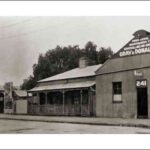

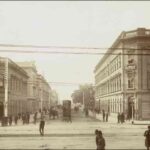
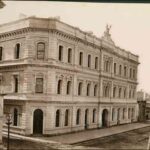
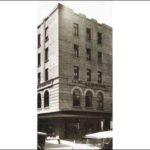

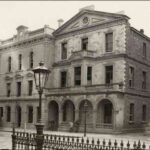
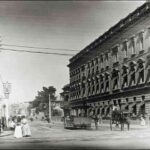
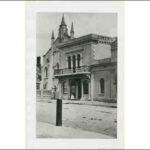
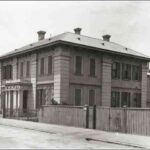
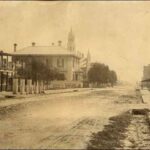
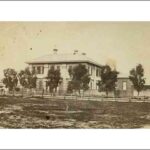
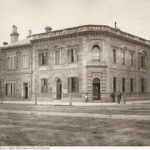
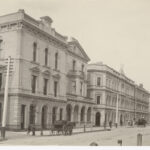
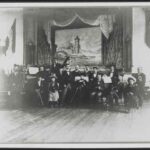
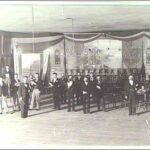
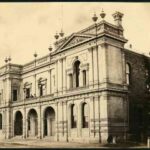
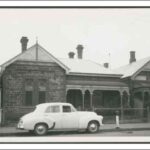
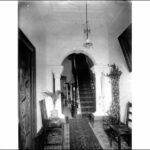
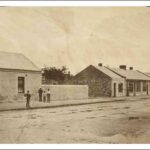
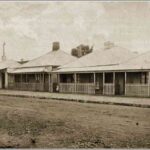
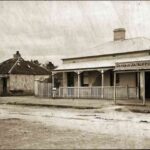
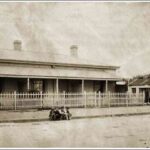
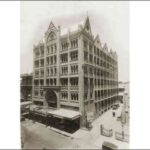
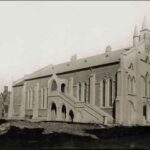
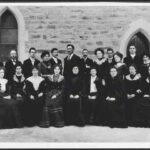
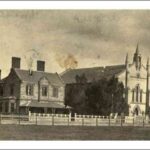
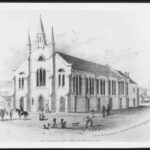
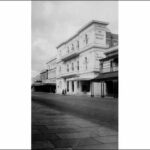
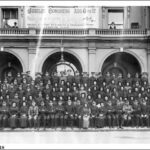
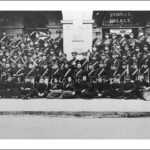

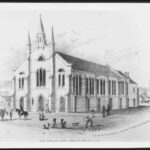
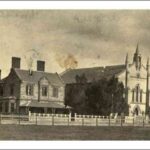
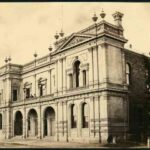
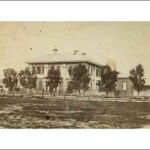
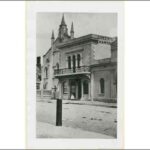
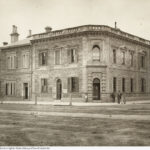
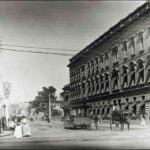
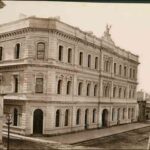
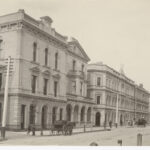

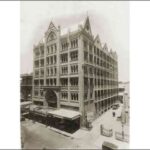
Comments